Whether your transition includes a vendor change, an acquisition, or a portfolio expansion, UBC makes it easy to seamlessly migrate your PV system without compromising data quality or regulatory compliance. We take a synergistic approach to the following critical PV elements that must be considered when handling a migration:
Safety Database Readiness & Reporting
One of the first key steps towards a PV transition is to confirm that your safety system is ready to accept and submit the influx of data, ensuring that the additional reporting responsibilities brought into your program will be compliant with regulatory requirements. The database will need to be configured with the relevant studies, products, reporting destinations (health authorities and business partners, as applicable), and rules. The subsequent gateways and/or portals must be set up to receive/submit/exchange the applicable safety data. Next, user access must be established, and applicable training conducted. If there is any case data that requires migration, one must determine the data migration format (e.g., database dump; XML file import with supplemental line listings; manual migration) and strategy, factoring in the case volume and timing associated with the determined strategy.
Transfer of Case Processing Activities
As part of the safety database readiness, user database training is taken into consideration, but there must also be an understanding of the challenges associated with the transitioned activities within the database. One must establish cutoff dates between affected parties for data entry/case processing and medical review activities, along with those for queries management, expedited reporting, literature review, and signal detection activities to ensure that duplicate work is not performed, but more importantly, that you are not compromising data quality or regulatory compliance. Data entry conventions, controlled procedures, and/or SAE/AE form development or updates should occur prior to the transition of activities. And if you have any new or existing external sources, such as a medical information call center or safety partner, reconciliation set-up is also required.
Literature Review
Global and local literature review is another key activity of your product portfolio and PV system transfer. One must work with the applicable parties to develop, review, and validate the applicable search string(s), as well as identify the list of local journals to be reviewed (i.e., journals not reviewed in the global search). To streamline your PV system, it is recommended to utilize a literature review tracking tool, and as such, this must also be configured prior to the transition and in coordination with the data lock point (DLP) for aggregate reports and signal detection activities.
Clinical Trials
With clinical trial activities, there are also several other items that come into play. One must consider if an Electronic Data Capture (EDC) system will be used, and if so, allow the appropriate time for access and SAE alert set-up, training, and system integration activities (e.g., gateway set-up between EDC and safety database). In addition, designated PV personnel must be granted access to the unblinding system and it should be determined which stakeholders can receive/access to the unblinded data to ensure clinical trial integrity. One should also verify that the study contact lists are accessible to the new PV vendor. Regarding the clinical trial sites, the applicable sites must be notified of the transition and trained on the applicable documents, and SUSAR gap pack preparation and distribution should be discussed.
Aggregate Safety Reports and Signal Detection & Management
Before a transition strategy can be developed for your portfolio, you must have a keen understanding of the aggregate report schedule to make certain that the applicable case data has been migrated in time and/or that the legacy database outputs and how that data is obtained in the new safety database is outlined. Similarly, one must understand the current safety profile of the products – how they are identified, investigated, and validated – for both existing and potential new safety signals, and how that process with be completed moving forward. Like literature reviews, a signal management tracking tool, and potential data mining and disproportionate analysis tool, are often recommended for use, and as such, must be set up accordingly.
EU Post-Marketing Services
If the transfer of your PV system includes opening your product portfolio in Europe, then the set-up of the company profile and product registration /maintenance in the EU Regulatory Agency database(s) must be actioned. One must also ensure that the EU and local QPPV nominations, and transfer of those activities, as well as the PSMF and RMP registration, development and maintenance/updates are actioned based on regulatory guidance and timelines.
Project Management
Lastly, project management and oversight are critical to the transition of your PV system. It is crucial to identify any potential risks and define the applicable mitigation actions with the aforementioned activities. One must create and/or review regulatory compliance and Key Performance Indicators (KPI) metrics and determine how this information will be captured (i.e., dashboard for project oversight). It’s also important to set up safety mailboxes and other relevant communication tools and confirm that the key stakeholders are aware of these new mailboxes. And if you are transitioning activities to a new vendor, be sure that kick-off meetings are held to create a robust set of project plans, including a transition plan and follow-up meetings to expedite decision making, if needed. Once the transition occurs, also ensure that there is a period of hypercare to discuss and action any findings.
For more information on UBC’s comprehensive global pharmacovigilance services and how UBC can help manage your PV system transition, get in touch with us HERE.
ABOUT UBC:
United BioSource LLC (UBC) is the leading provider of evidence development solutions with expertise in uniting evidence and access. UBC helps biopharma mitigate risk, address product hurdles, and demonstrate safety, efficacy, and value under real-world conditions. Our combined scientific expertise in pharmacovigilance, risk management, and signal detection and assessment, underpinned by innovative technologies, offer our customers flexible solutions generating the relevant insights necessary to make informed decisions earlier, meet stakeholder requirements, and ensure the safety of products.
ABOUT THE AUTHORS:

Antoinette Messulam-Defaux, Associate Director, Global Case Processing, PV
Mrs. Messulam-Defaux has worked in PV since 2011, participating in, and leading all aspects of clinical trials, post-marketing and medical device safety including case processing activities, literature screening and review, data migration, local PV system set-up, as well as PSFM preparation and maintenance. In her current role at UBC, Mrs. Messulam-Defaux oversees and coordinates the set-up of PV systems, ensuring a seamless transition of PV activities and data migration into UBC the safety database. Under Mrs. Messulam-Defaux’s supervision, the Case Processing Unit manages case processing and submission activities, compliance monitoring, literature review and screening, compliance monitoring and support aggregate reporting and signal detection activities among other deliverables.

Michel Rempel, PharmD, Senior Director, Client Services, PV
Dr. Rempel has 14 years of PV experience and serves as a member of our global PV Leadership Team. She is responsible for leading business development activities from client proposal and budget preparation through PV project operationalization. In addition, Dr. Rempel oversees PV client governance meetings and manages PV marketing strategy and development. Dr. Rempel has worked in PV since 2010, participating in, and leading, all aspects of clinical trial, post-marketing, and medical device safety including case processing activities, literature screening and review, aggregate report preparation and development, and signal detection activities.






